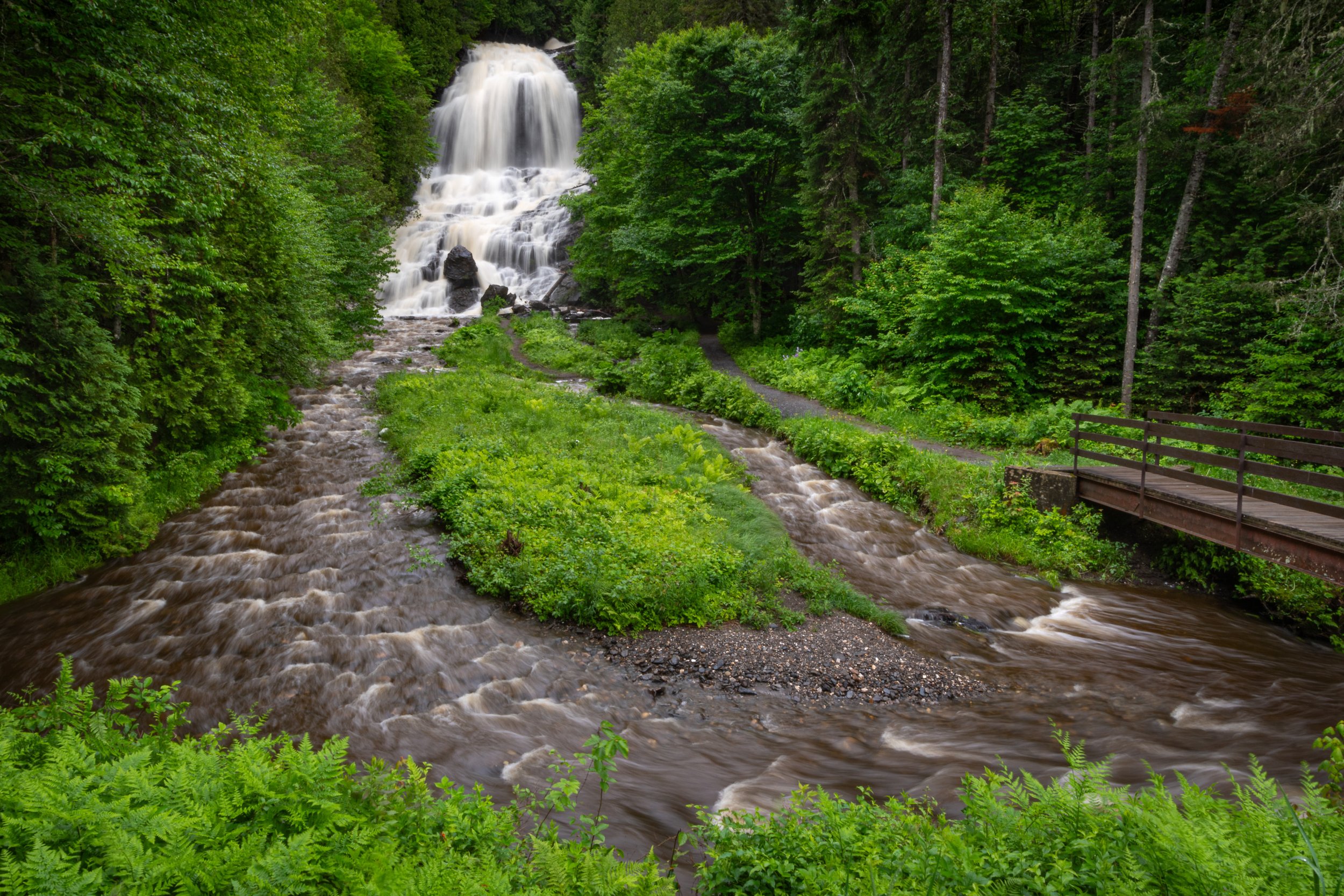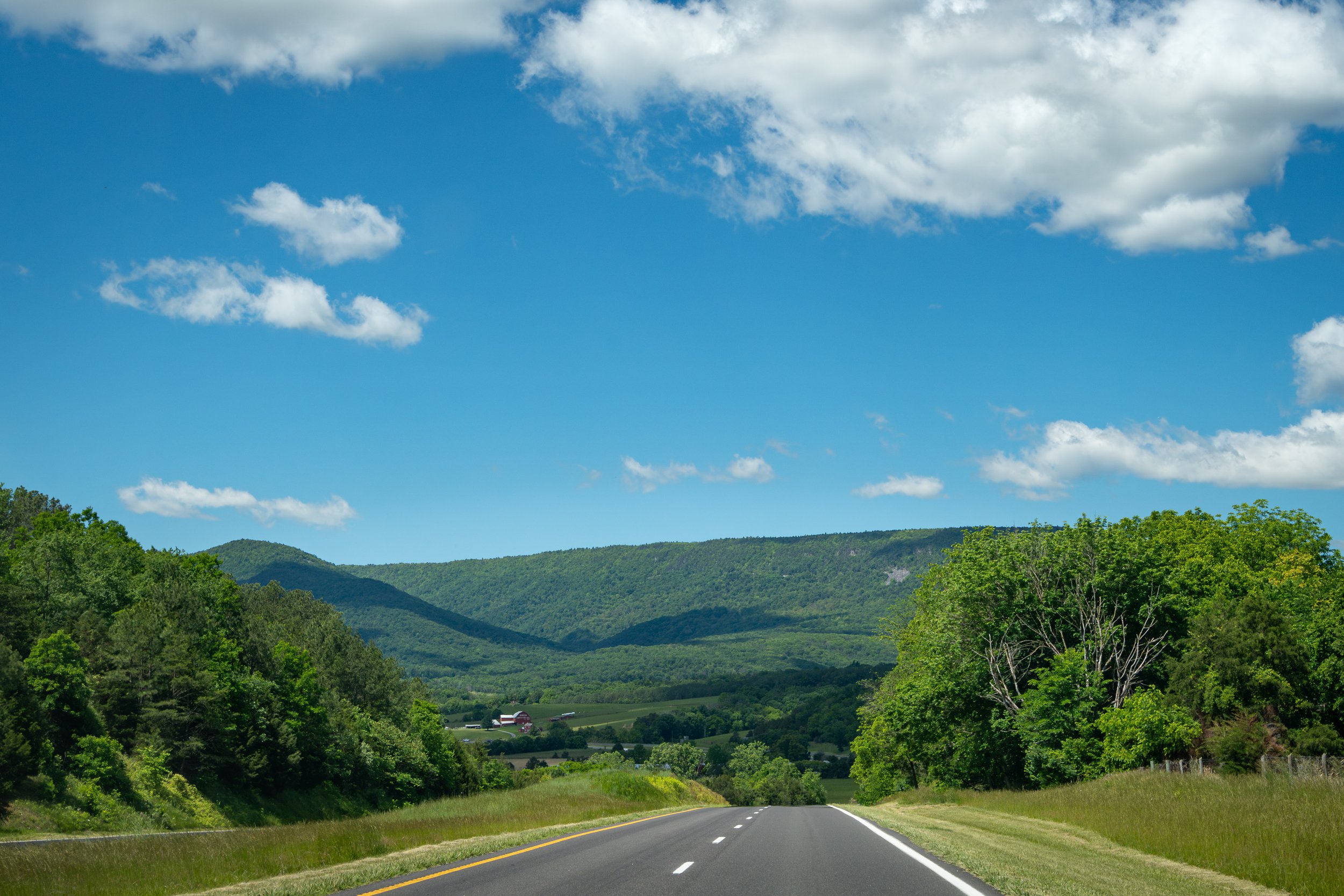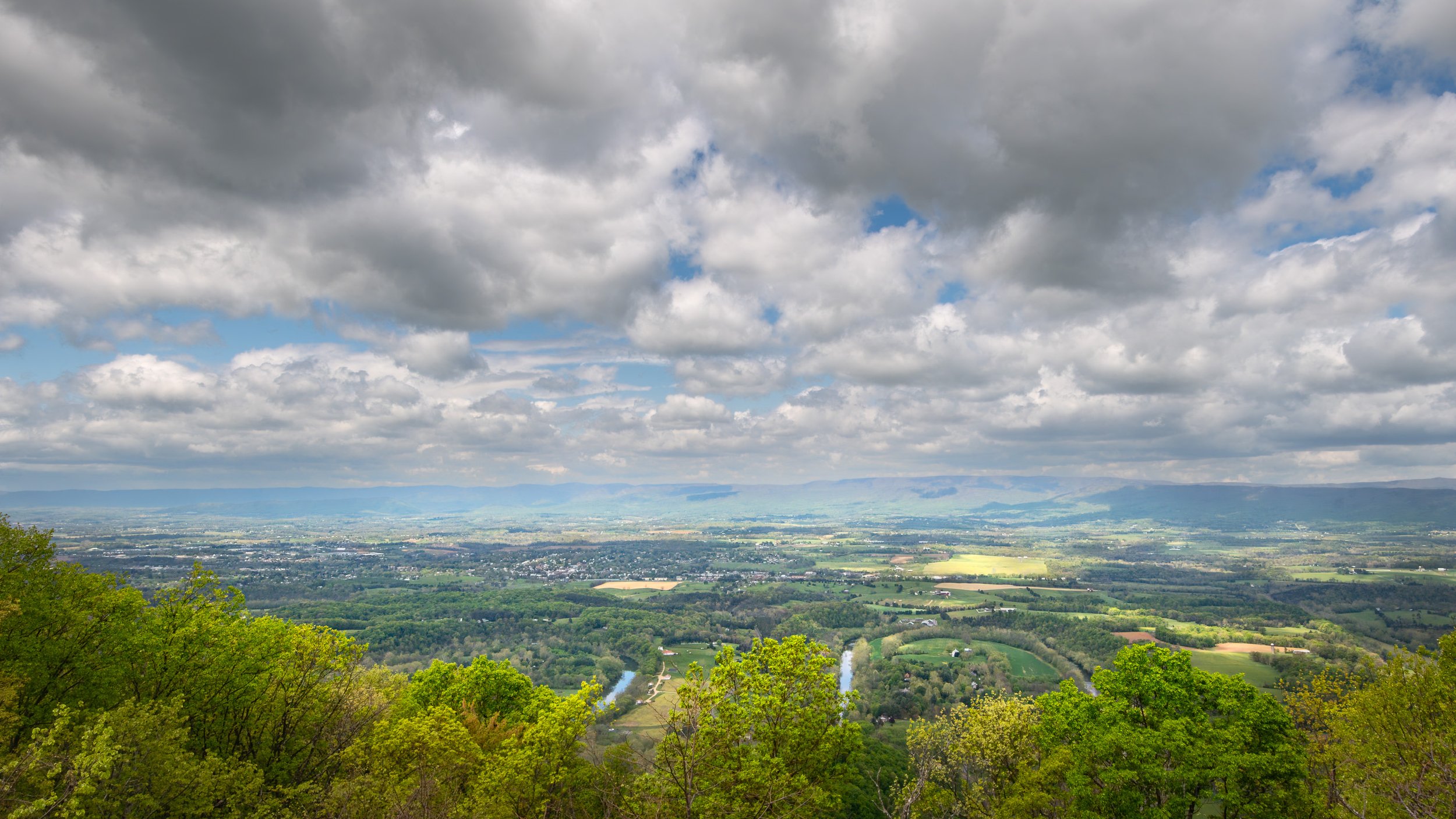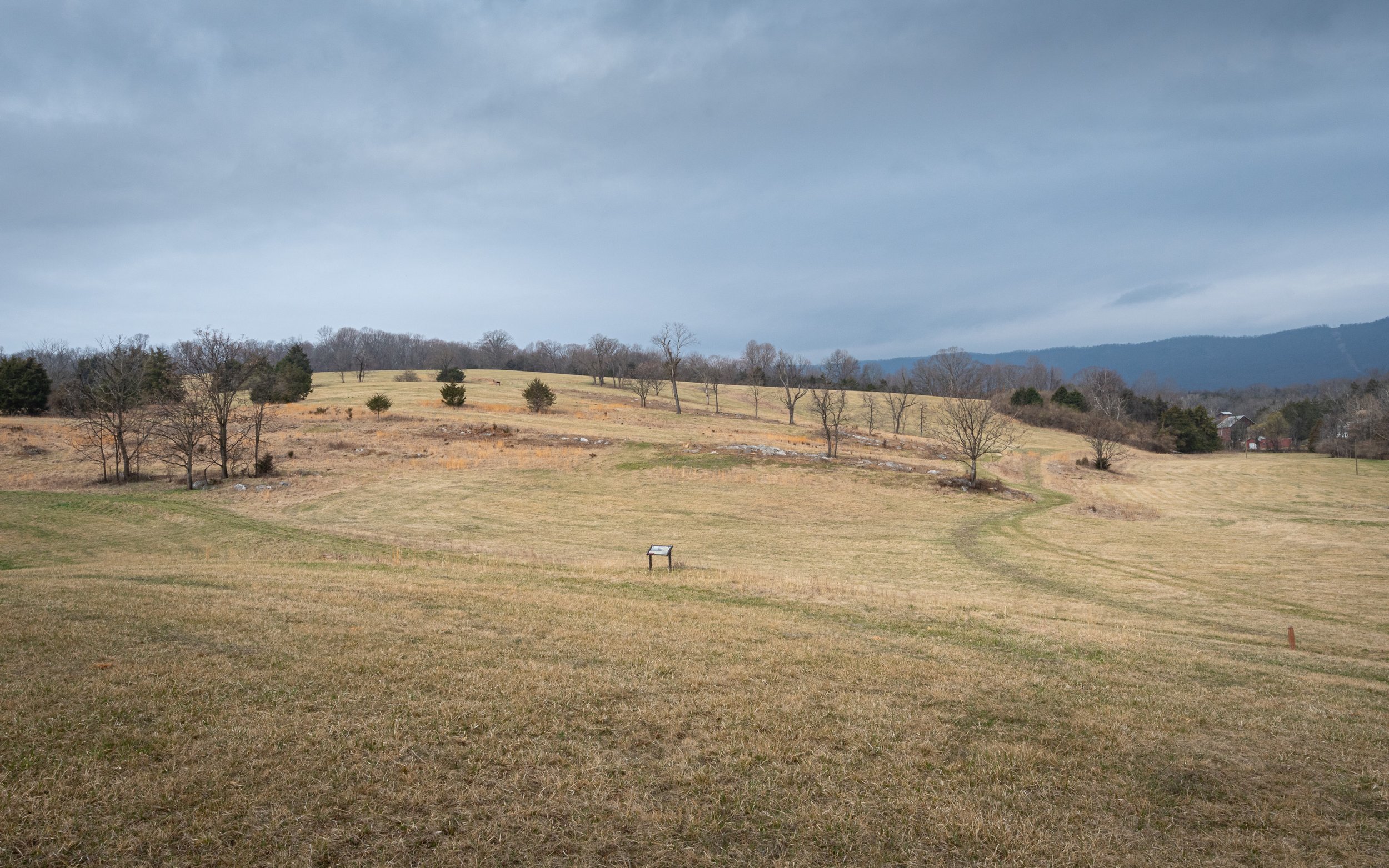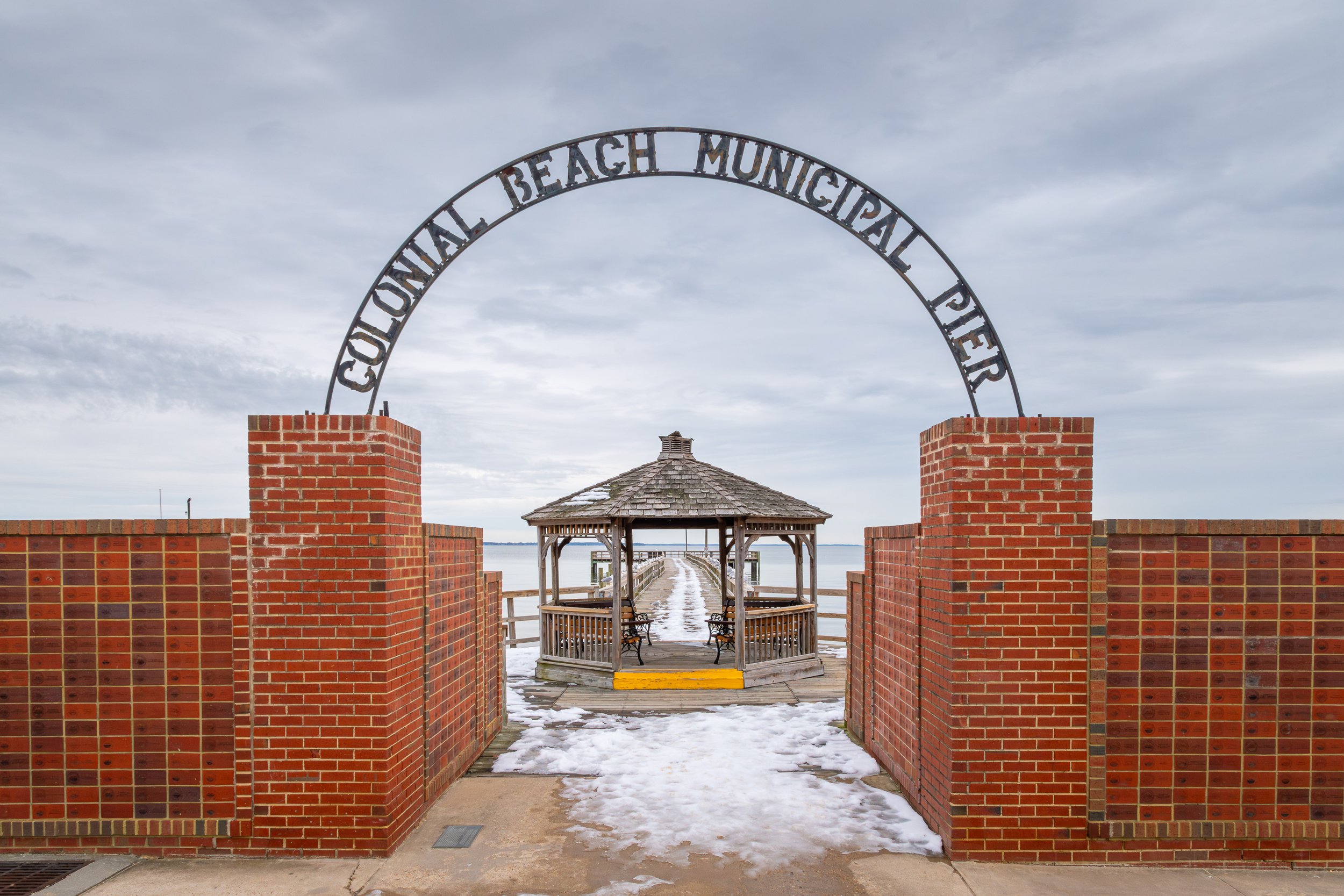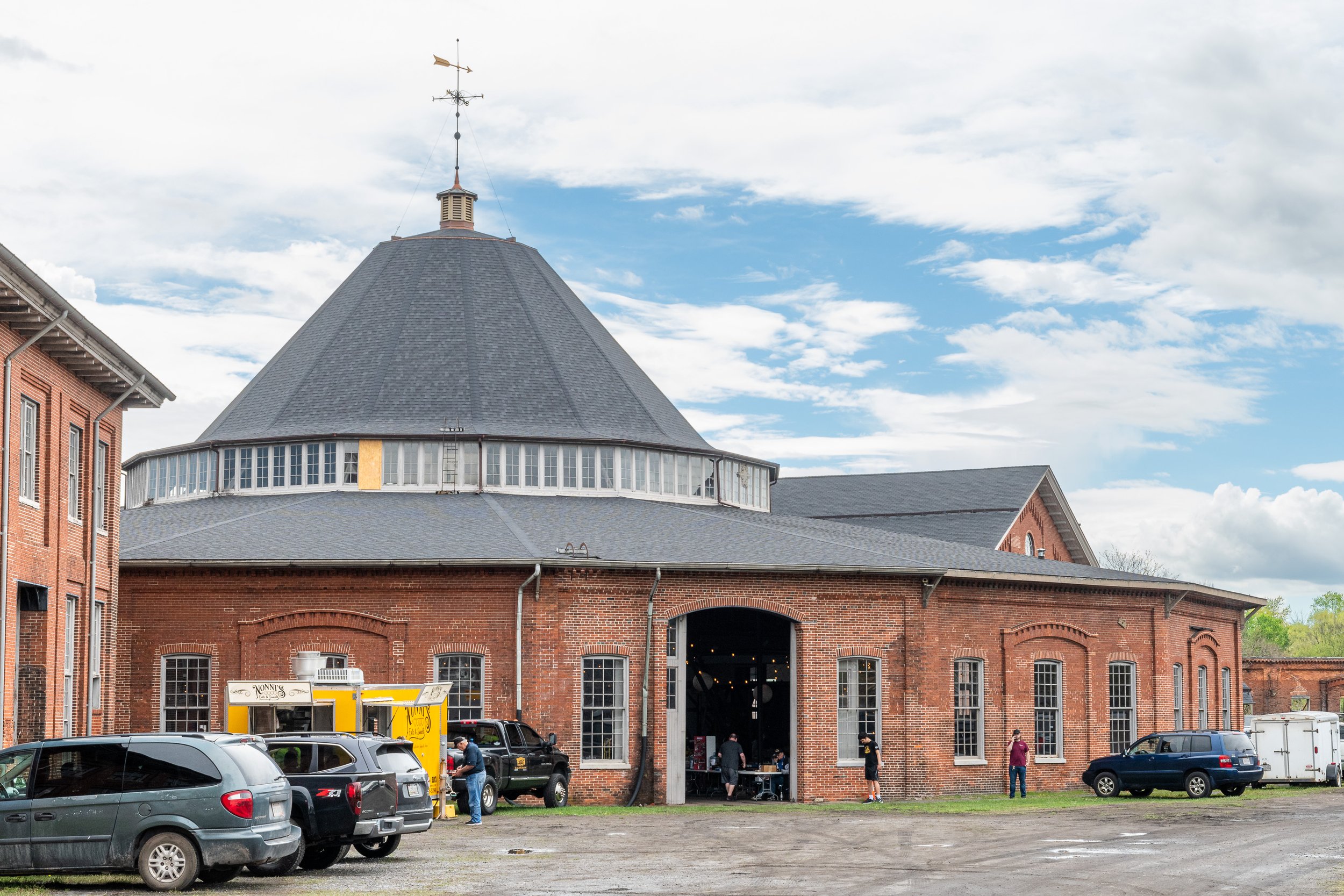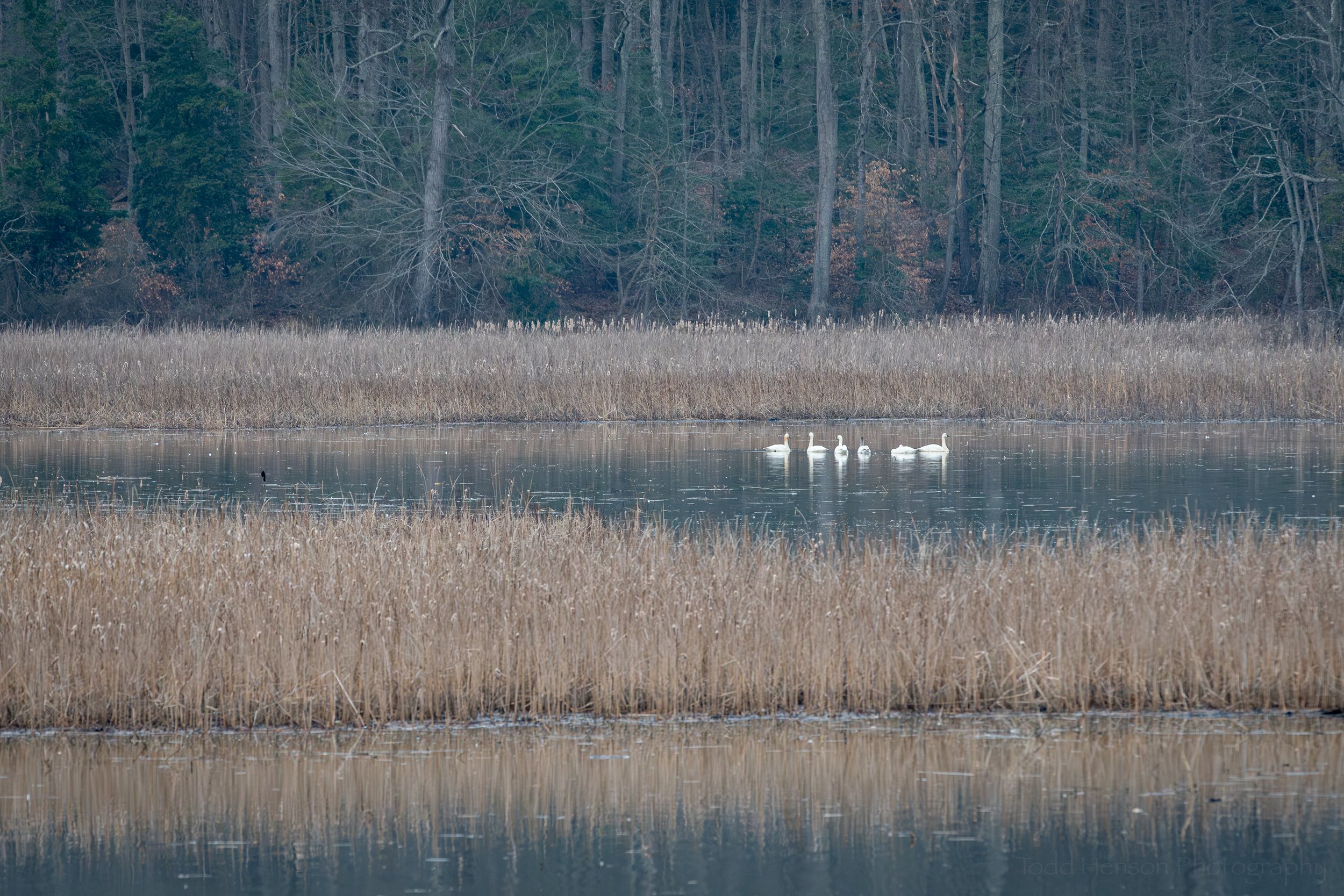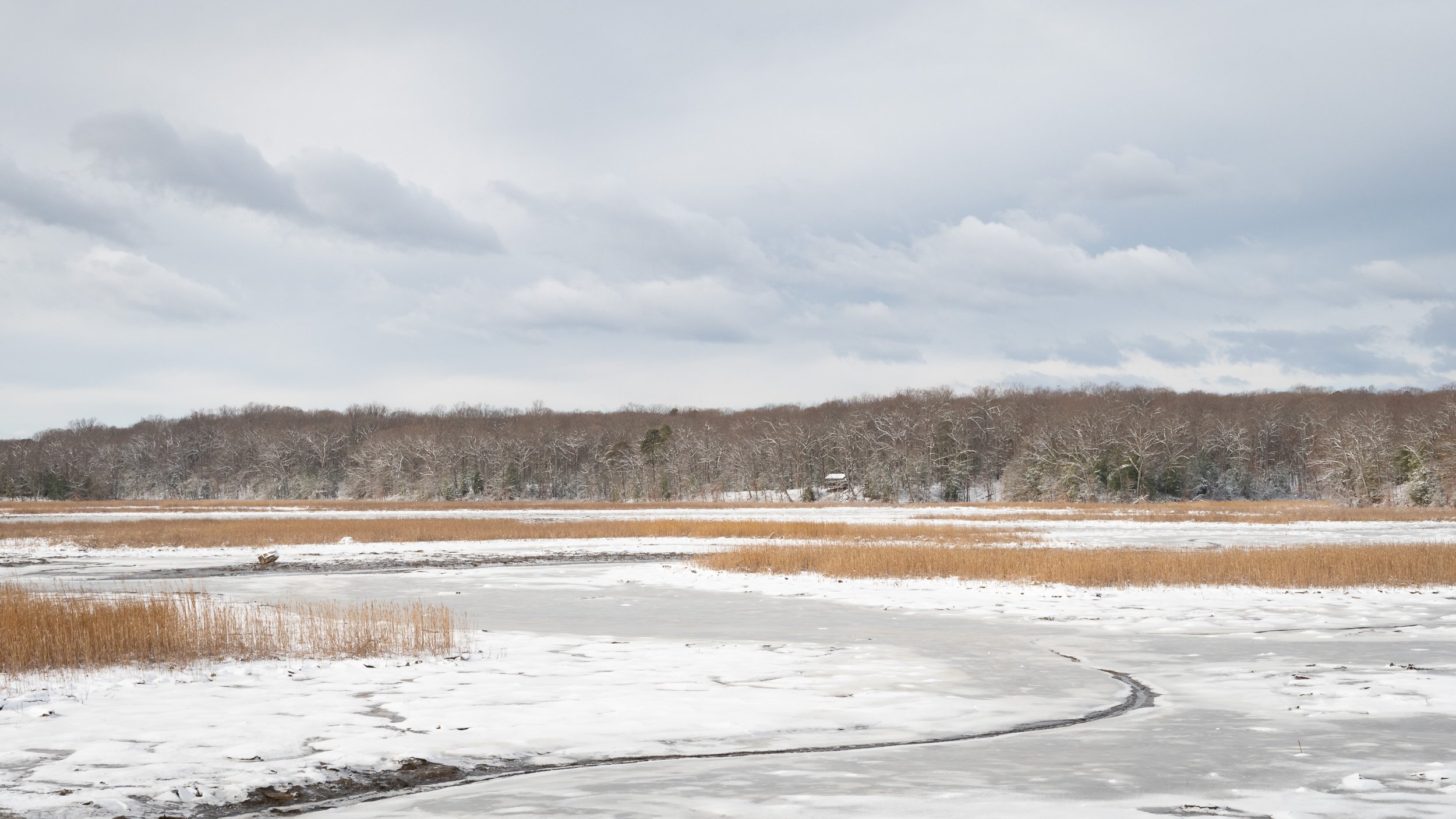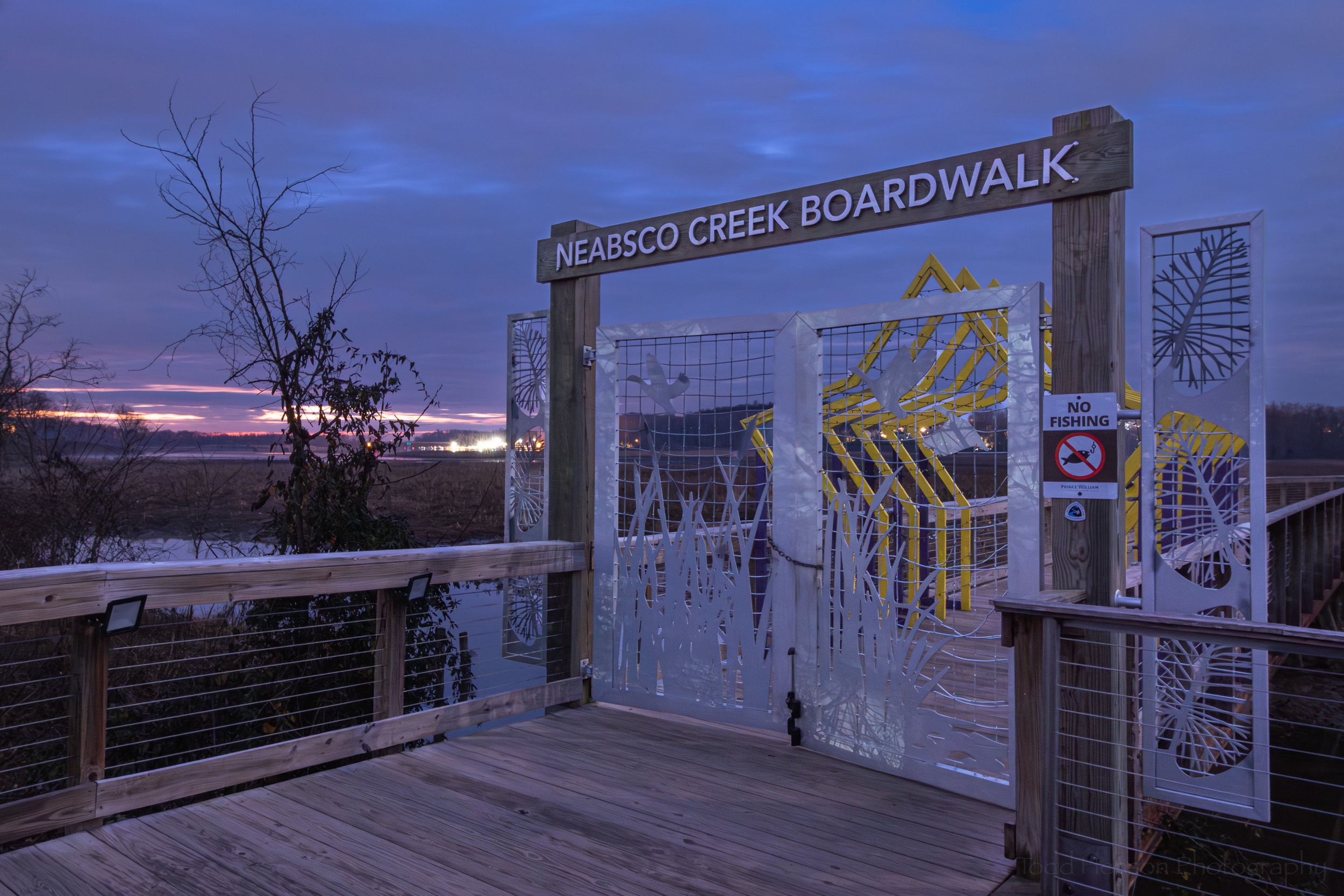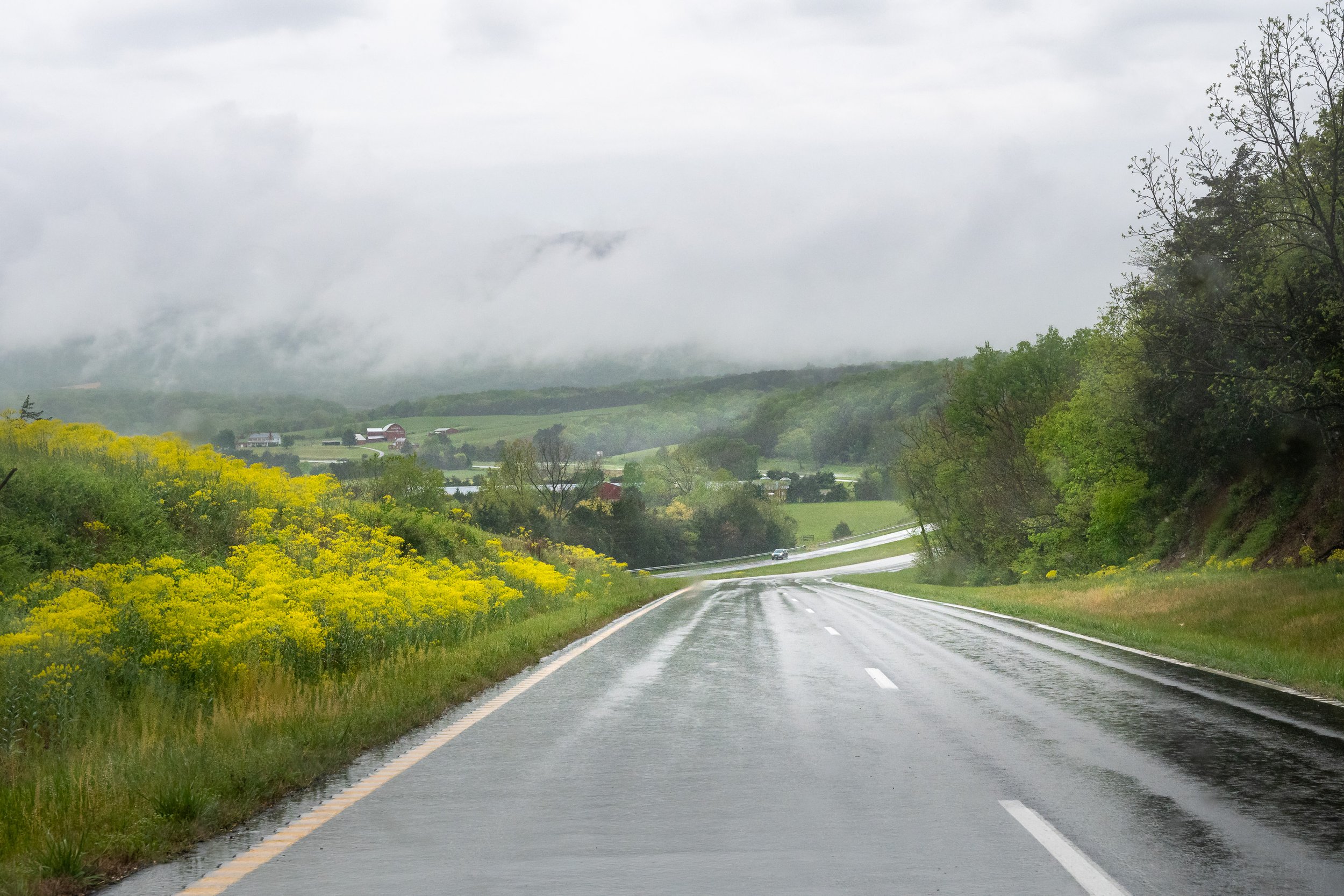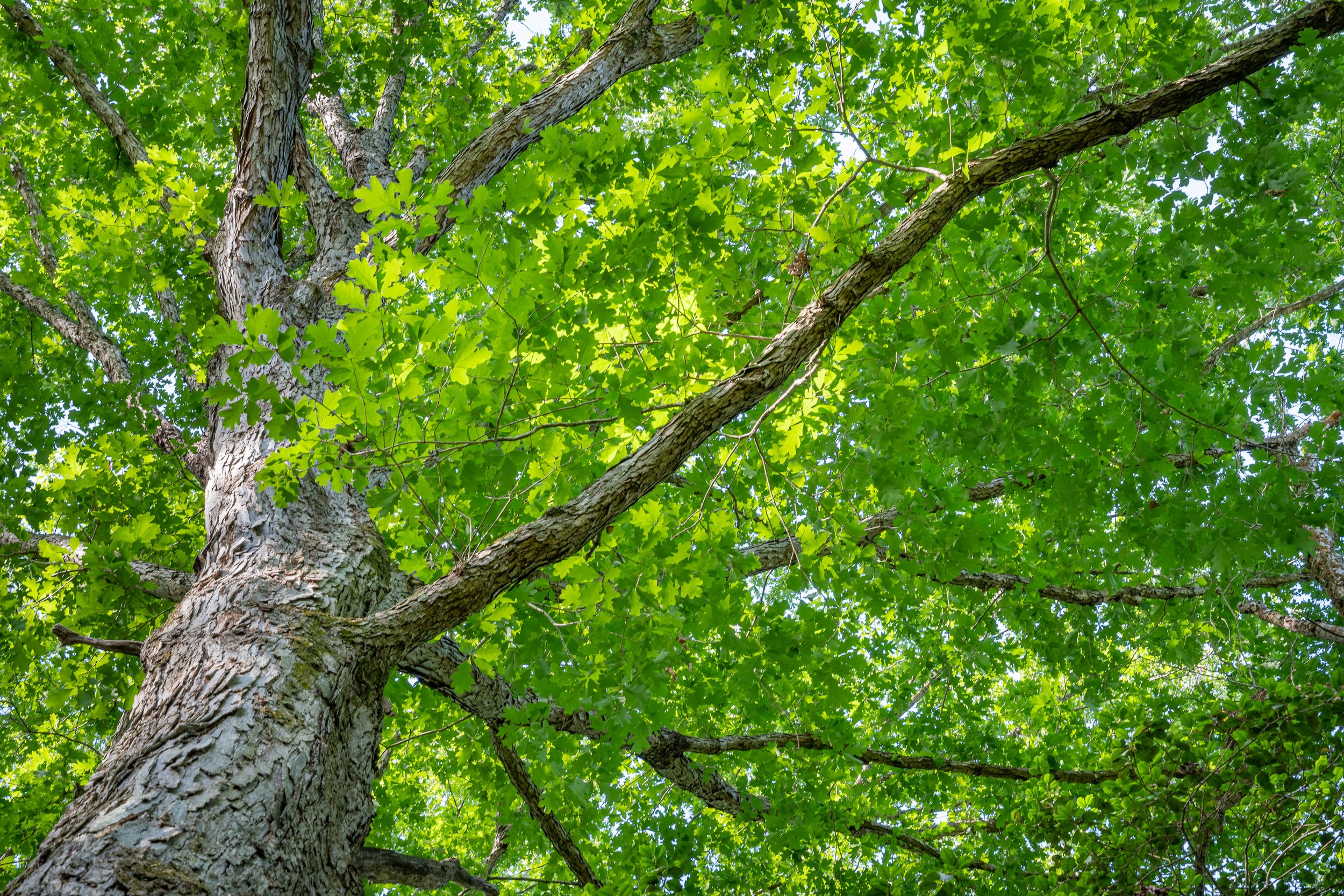In early February of 2024 my father and I returned to Mason Neck hoping to see the tundra swans that winter over in this area. We’ve been fortunate to see them in previous years, and were able to see them again this year, though at quite a distance.
I’d checked the tide charts before we set out and found high tide coincided with sunrise so we thought there was a good chance of viewing the swans. I thought it might be nice viewing them from the opposite shore we did last time, thinking this would position the sun in a more flattering location. Unfortunately, the day was completely overcast, so rather dark, and the tundra swans chose to group on the far side of the marsh, much closer to the other observation platform. This put them at quite a distance from us.
The Wildlife
Distant tundra swans at Great Marsh
Even at a distance, though, it was great to see and hear the tundra swans. They have a very distinctive sound so we always know when we’ve found them. We were fortunate to watch as two more swans flew in and landed with the rest.
Distant observation platform and tundra swans
Two more tundra swans fly in
There was quite a range of birdlife, and wildlife, beyond the tundra swans. In one scene I attempted to capture tundra swans, a red-winged blackbird, mallard ducks and Canada geese in a single image. I wasn’t able to do this with just one photo, though, because of the shallow depth of field. The low light just wouldn’t allow me a reasonable balance of ISO, aperture and shutter speed, so I decided to try focus stacking by focusing on the near birds for one photo and the far birds for another. But of course the birds were moving, so using the software to auto focus stack didn’t work and I had to manually merge the photos. If you look closely this resulted in a strange bit of out of focus brown grass in the center of the photo between the blackbird and the swans, but it did bring each bird species mostly in focus so you could see them all.
From top to bottom: tundra swans, a red-winged blackbird, a pair of mallard ducks and a pair of Canada geese.
At one point a beaver swam across the water towards its lodge. And later a muskrat swam right towards us. These were the only mammals we saw this time around.
A beaver on the left and a muskrat on the right swimming through the water. The beaver is actually much larger but was at a much greater distance so looks smaller in the photo.
There is a lot of duck hunting in this area, so even though the ducks are safe in this location they still tend to either fly off or swim far away when we arrive at the observation platform. That meant all photos were at a distance, but we still were able to view a range of ducks. The ones in these photos are, I believe, mostly American black ducks. There were the mallards in the photo above. And I saw a pair of hooded merganser and several other species at a greater distance.
A pair of American black ducks. They were sort of swimming together with one following the other, but they didn’t get close enough for a single photo of them both.
Ducks at Great Marsh. I believe most, if not all of these, are American black ducks, though I may be mistaken.
The last interesting scene to show you was a noisy flock of black birds that started out moving through the trees and later moved around the light brown grass in the water. I believe most of these birds were common grackles but I also identified some red-winged blackbirds. It wouldn’t surprise me if there were other species in the mix, such as European starlings, but I wasn’t able to positively identify any more.
A group of black birds flocking at Great Marsh. Most are likely common grackles but I was also able to identify red-winged blackbirds. There might be other species mixed in, as well.
The Challenges
There were a number of challenges to this photo session. With the low light levels and the moving birds I boosted my camera’s light sensitivity way up (to 4000 ISO) so I could get a fast enough shutter speed, but this meant there would be a fair bit of digital noise in the files. Because of the distance there was a slight bit of haze to deal with. And because I don’t photograph with the long lens quite as often I was likely out of practice. All this resulted in photos that aren’t perfectly sharp, though I did the best I could to deal with these issues in post-production in the computer. They work just fine for a blog post but some might not work as well if I were to try to print them in a larger format. I tend to prefer creating imperfect photos than not creating any at all, especially when documenting wildlife. 😊
Do you enjoy these posts?
Sign up to receive periodic emails with updates and thoughts. Don’t worry, I won’t spam you. And please consider purchasing artwork or products from my online store, and using my affiliate links in the sidebar to the right when shopping online.
I appreciate your support!


